The origin of life remains a great mystery in biology. Continental drift has erased most of the record, until all that's left of the first half billion years of evolution are some millimeter sized zircons embedded in later rocks. These can tell us the composition of the early Earth's atmosphere (through pockets of air trapped in the crystals) but not much else. And there is much to discover. The most primitive microbes we know are far too large to be the first living cells, and modern DNA based life is far too complex.
Mars is one of the best places to go to try to fill in this gap in our knowledge. It had oceans early on like Earth, and might well have been as habitable as early Earth. It's had floods since then, but never had continental drift to erase its history. Then it lost most of its atmosphere and got plunged into deep freeze conditions with similar temperatures to the Antarctic interior for billions of years.
There's an excellent chance that it had life in the early solar system (and may still have it today), If so, surely we will be able to find traces of it somewhere on Mars. However that doesn't mean it will be easy to find.
The only geological evidence we have of conditions in the early Hadean period on Earth are millimeter scale zircons (one of the hardest stones though not quite as hard as diamonds) embedded in these later outcrops in the Jack Hills area of Australia. We have learnt about the early Earth environment through pockets of gas trapped inside them - but they have nothing to tell us about early organics.
Mars, without continental drift or modern seas, doesn't just have a few zircons from this time. It has dry ocean beds, deltas and beaches, fossilized hydrothermal vents, and kilometers deep layers of rock from the time of the early solar system, still there for us to study today. If Mars developed life like Earth, we have a good chance to find traces of this early life, eventually - but it might not be easy to find what we are looking for.
Early life and proto life on Mars might well be confined to special locations (such as hydrothermal vents perhaps) before it developed its modern capabilities to survive almost anywhere. Then, you need to find a place where the remains were deposited in early Mars, rather than eroded away. Then they have to survive later processes as sediments get turned into rocks.
Next, the remains of that life have to be buried deep below the surface soon after they are deposited, otherwise they will be completely destroyed by the cosmic radiation and oxidation processes on the surface of Mars. Finally, they need to get uncovered again in the recent past, so our rovers can find them.
So where is the best place to look?
This is quite topical, as it turns out. ESAs ExoMars rover is booked to travel to Mars in 2018 (with a technology demonstration precursor in 2016), and they have asked the Mars science community to submit candidate landing sites for it. The deadline is 28th February.
ESA have asked the Mars science community to submit candidate landing sites by 28th February 2014
They want to target ancient sites from the times of the early seas on Mars (Noachian period) and the beginning of the time of floods (Hesperian period).
So, what would be good places for ESA to send ExoMars? As it turns out, ExoMars has many restrictions, so many of the sites on Mars are inaccessible to it. So, let's also ask, what about other future rovers, where are the best places to look for early life on Mars, and life's precursors?
Since I'll mention them many times, here is a brief refresher on the Martian geological epochs. It's easy to learn them as there are only three:
Mars geological epochs
- The oldest Martian epoch is the Noachian period, period of oceans, first few hundred million years
- The next period is the Hesperian period, period of floods, with a second ocean forming briefly a billion years after the first.
- The final geological period is the Amazonian period which we are in now, with the atmosphere a near vacuum and the surface almost entirely dry though still with some traces of surface liquid water able to interact with the atmosphere either now or in the recent geological past (isotope measurements by Phoenix)
PREBIOTIC CHEMISTRY
ExoMars and our other landers and rovers on Mars are not just searching for early life. They search for pre-biotic chemistry as well.
We need to be able to distinguish between the chemicals delivered to Mars by comets, and any alterations of it by life or by pre-biotic processes after it was delivered to Mars .So, first, let's look at our search for the chemical conditions before life began. These include results from studies of meteorites on Earth, and comet studies. ESA has sent a mission to study the chemistry of a comet close up, and with any luck we'll get our first results from it later this year.
SEARCH FOR PREBIOTIC CHEMISTRY ON COMETS AND METEORITES,
The Philae lander on the ESA Rosetta mission to a comet will be the first mission to search directly for prebiotic chemistry on another solar system body. It is searching for asymmetrical molecules which can come in two or more forms. For instance, DNA can spiral clockwise or anti-clockwise, but only the clockwise form is used for life on Earth. The nucleotide molecules that make up the DNA, like steps in a spiral staircase, also come in two forms, R and L. Every single step of the DNA or RNA has to be R type. Probably life on other planets would work the same way - otherwise it would be a bit like trying to put a machine together with half of the screws cut clockwise and half cut anti-clockwise, at random.

Artist's impression of the Philae Lander on a comet, credit ESA.
So, non living chemistry normally results in an equal mix of all the possible forms, while life normally produces 100% of one of the forms only. The different forms are called isomers, and a molecule that comes in two or or more different forms is called a chiral molecule.
There are some non living processes that create a chiral imbalance. But if you find 100% of a single isomer, then as far as we know, that's likely to be a clear signal of life.
Philae is not looking directly for life, instead it's looking for pre-biotic chemistry. The idea is that some of the chemistry that lead to life actually happened in comets and in the early solar nebula.
We know for sure that amino acids were formed, and more complex organic molecules may have formed as well. Could it be that these had some chiral bias already before they got to Earth?
We have evidence about this already from meteorites, so it seems at least very likely that Philae will find a chirality excess as well. The first reports of chirality came from analysis of the Murchison Meteorite, a meteorite that landed near Victoria in Australia in 1969.
Two fragments of the Murchison Meteorite. This fell in 1969, and is unusual as a meteorite was observed to fall, and the pieces retrieved soon after. So it is in particularly pristine condition. The meteorite fragmented in mid air and pieces fell over an area of 35 km2. These were sent to various museums around the world, the two shown in this picture are in the Museum Victoria in Melbourne Australia.
This meteorite is a carbonaceous chondrite and specifically a petrologic type 2, - this means it is part of an asteroid that formed in the early solar system, and got warm enough so that the ice melted, but no warmer than 20 °C - so it is relatively unaltered early solar system material.
An analysis in 1982 showed a chiral excess, that some of the amino acids had a left handed excess like Earth amino acids. This could be contamination of course, but other lines of evidence show that the interior portions of the fragments are pure. For instance they are eniched in the nitrogen isotope 15N. Detailed analysis showed that the meteorite fragments contain many amino acids and other organic chemicals that are rare or absent on Earth, another good sign that the meteorite preserves extraterrestrial organics rather than Earth contaminants.
More recent investigations confirm these results. In this 2006 analysis the EET92042 and GRA95229 meteorites had chiral excesses ranging from 31.6 to 50.5%.
GRA95229 - another chrondite, collected in Antarctica, had chiral excesses of +31.6‰ for a-AIB to +50.5‰ for isovaline, while the EET92042 meteorite ranged from +31.8‰ for glycine to +49.9‰ for L-alanine. It's thought that these excesses are extraterrestrial and not due to contamination by Earth life.
These are Antarctic meteorites so less likely to be contaminated by modern Earth life. They are certainly not pristine, are altered by water, but the mix of amino acids is non terrestrial so they don't seem to be a result of contamination. The amino acids also have abundances far greater than you'd expect from contamination in Antarctica, 2.5 times greater than typical levels of organics there. So it's thought that these excesses are extraterrestrial and not due to contamination by Earth life. For a more recent review of this, see the Chemistry Society Review article: Understanding prebiotic chemistry through analysis of extraterrestrial amino acids and nucleobaess in meteorites.
We don't know for sure why these meteorites, relics of the primordial solar nebula, have this excess. One theory involves polarization of light in nebulae in star formation regions. One way this could happen is through reflection of light off non spherical dust grains aligned by a magnetic field. For more about this see Circular Polarization and the Origin of Biomolecular Homochirality
This is research we can do on Earth, studying meteorites here, and also with missions to comets and asteroids, especially ones in near pristine state, such as comets on their first pass through of the inner solar system. Philae will probably find a chiral imbalance on its comet. It would be rather surprising indeed if it doesn't.
So when we find organics on Mars, we are pretty sure to find chiral excess, and interesting pre-biotic chemistry, since this process had started already by the time comets formed, also in meteorites, and even in gas clouds long before our sun was born.
Our meteorite studies actually tell us about prebiotic chemistry before our solar system formed as well. The analysis of nitrogen and deuterium isotopes in meteorites show surprising concentrations - and not correlated, some parts of the meteorite have unusual mixes of nitrogen isotopes and other parts of the same meteorite have unusual concentrations of deuterium. Apparently the meteorites are made up of fragments that were formed in different extrasolar environments. Probably the cloud that condensed to form our solar system had a mixture of materials that came from different extrasolar environments.
ORGANICS CREATED ON MARS BY NON LIFE PROCESSES
Organics on Mars could be
- Created in volcanoes - A study of the organics in meteorites from Mars (fragments of Mars sent to Earth after an impact on the planet) showed that some of them, at least, were created on Mars by volcanic processes. This process is something that also happens in volcanoes on Earth.
- Created by lightning, as in the Miller-Urey experiment, from water, carbon dioxide, ammonia etc
- Created in serpentization reactions in hydrothermal vents.
- Other abiotic synthesis
- Delivered to Mars in the form of meteorites and comets that hit Mars, in this case the organics formed in the solar nebula or were already present in the nebula when it condensed
- Always there, in the planetary embryos that came together to form Mars
- Created by life, by primary producers, from raw ingredients such as for instance, sunlight, carbon dioxide, water, nitrogen from the early Mars atmosphere, and trace elements, in the case of photosynthesis.
Any of these could later become food for life then be transformed by it and given a chiral bias.
DESTRUCTION OF THE CHIRAL BIAS BY RADIATION
Cosmic radiation on Mars would destroy many chemicals and could remove the chiral bias. But deep down, rocks are protected from this. Below about 20 meters depth, then the cosmic radiation is negligible but the natural radioactivity of the rocks is significant, and especially so in the early solar system when there were short lived radioactive isotopes no longer abundant today. The total expected dose since the early solar system is 14 MGy (average of 0.003 Grays a year, though most of it in the early solar system when rocks were more radioactive). There, 26Al, produces 11 MGy, and the rest is from radioactive isotopes such as 40K, 232Th, 235U, and 238U.
Some researchers in Spain and Italy have tested this by radiating amino acids with gamma radiation equivalent to 4.6 billion years worth of radiation (for materials buried at depth of 20 meters). The experiments show that a substantial number of amino acids remain, and what's more, the chirality signature is preserved as well.
Our best chance of finding a clear chiral signal is to find materials from deep below the surface like this, and if so then the signature could easily be preserved from the early Noachian period.
ORGANICS LOSE CHIRAL SIGNATURE THROUGH RACEMIZATION AT WARM TEMPERATURES
It's all very well to look for chiral signatures in meteorites and comets.These chemicals were preserved at ultra low temperatures as low as 10 Kelvin (-263 Centigrade) for billions of years. See Interstellar Organic Matter in Meteorites. But what about warmer deposits?
When organic material is kept at warm temperatures, it loses its chiral signature through a process known as "racemization". How quickly this happens depends on humidity, temperature and other factors. This leads to the science of amino acid dating. As a very rough rule of thumb, at 30 °C for instance, the signature gets lost after about 200,000 years. At 20 °C on Earth it is lost after about 10 million years. But this also depends on such things as the acidity and alkalinity of the soil.
On Mars we hope to find organics from billions of years ago. So will there be anything left of the chiral signature after all that time? Well Mars has many advantages over Earth, as far as preserving chirality. It's extremely cold a few meters below the surface, and also, very dry because of the near vacuum for an atmosphere. Also it had oceans and rivers like Earth, but the later floods were episodic. Also the oceans dried up or froze over relatively suddenly on geological timescales.
OUR BEST CHANCE OF FINDING A CLEAR CHIRAL SIGNATURE OF LIFE ON MARS
It turns out that ancient martian life, if it remained below 250 K (-23 C) in dry conditions, would not have racemized significantly over the entire history of Mars. These are easy conditions to match on Mars. So we have excellent chances of finding chirality signatures on Mars.
Our very best chance of finding strong chiral signatures on Mars is to find a deposit that was frozen rapidly to below 0C first, and then cooled down ideally to 215 K (-58 C) within a million years, and was also covered with other materials to a depth of at least ten meters, so preserved from cosmic radiation and the warmth of the surface layers. This could happen on Mars easily, apart from any other processes, this must happen often when layers are covered over by deposits from a nearby meteorite impact, with its high impact rate compared with Earth.
Then of course we have to drill to find this deposit, or else, find a place where it got exposed by erosion recently, or excavated by a meteorite.
HOW CAN WE DETECT LIFE UNAMBIGUOUSLY?
If we can find a chiral signature in a sample which has had only minor racemization, we still have to detect its chirality and distinguish it from prebiotic chemistry. From the meteorite evidence, we need to be able to distinguish life even from non life processes that create a chiral imbalance of 30 or 50%. However the situation is not hopeless.
Different amino acids racemize at different rates, so you can "turn back the clock" and detect if the deposit started with 100% just one form of all the amino acids. We can also compare it with our meteorite evidence, and with later deposits from meteorites when life was no longer present at this place, and so show conclusively that some interesting, biological or novel prebiotic chemistry on Mars has converted the organics in our sample. For more about this see Amino Acid Racemization on Mars: Implications for the Preservation of Biomolecules from an Extinct Martian Biota.
The northern plains of Mars are especially interesting here. The ESA Mars Express orbiter was able to look deep underground with its ground penetrating radar. It found evidence of low density material extending 60 to 80 meters below the surface. These were probably laid down in the ocean beds of the ancient seas on Mars. There were two episodes of these seas and the second one, a billion years after the first, lasted only a million years before it dried up again. So it was lost rather suddenly, ideal conditions for preserving organic signatures without significant racemization. If there was life on Mars already it could have colonized that later ocean.
Artist's impression of Northern ocean on Mars billions of years ago
The Mars Express MARSIS Radar found evidence of 60 to 80 meters depth of lower radar reflectivity, typically granular materials that get carried into ocean floors, covering the Northern lowlands. They interpret this as evidence of ocean deposits. They suggest that Mars had two oceans, the first over 4 billion years ago and then a second ocean about 3 billion years which formed briefly and dried up again within a million years
See Mars Express spacecraft finds sediment from oceans that once covered red planet's surface.
Chris McKay proposed his Icebreaker Life mission to drill into these ocean beds and look for biosignatures of organics in them. It could target salt or ice deposits, and can only drill one meter depth. Its main aim is to search for more recent life, in the last few million years.
ExoMars can only drill 2 meters, so an 80 meter deep deposit is beyond its reach. But if the deep deposits have been excavated by later impacts or other events they could be reachable.
EXOMARS METHOD FOR DETECTING CHIRALITY
ExoMars will be using a miniaturized Raman Spectroscope, which is able to do sensitive tests for chirality. They have conducted a series of tests in the Atacama desert and it can detect life there perfectly, in the most challenging conditions on Earth.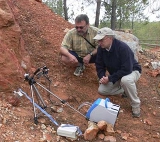
Field testing of the Exomars Raman spectrometer able to do highly sensitive non destructive analysis able to detect molecular structure
CURIOSITY'S LITTLE KNOWN CHIRALITY EXPERIMENT
As it turns out, Curiosity has capabilities to detect chirailty too. It's part ofSAM (Sample Analysis on Mars) . One of the traps for its gas chromoatograph is a chiral compound, so the rate at which compounds pass through it can depend on their chirality. On this page scroll down to GC4; trap; ChirasilDex (chiral compound separation).
I haven't found any more information about this experiment so don't know how they plan to use it.
REVIVABLE ANCIENT LIFE
At first sight it probably seems totally incredible that you could have revivable ancient life from Noachian or Hesperian Mars. And perhaps it is.
However on Earth increasingly ancient microbes have been revived - far more ancient than were ever thought possible before:
- 30 million old bacteria from spores from a gut of a bee entrapped in amber
- Gene sequence of bacteria isolated from a brine inclusion within a salt crystal from 250 million years ago. (see also original report in Nature, 2000) This is the so called Permian bacteria. There was some controversy about this at the time, but seems to be generally accepted now. See comment and reply in Geology magazine (2005)
- This is the crystal that contained 250 million years old "Permian bacteria" in a liquid brine inclusion in the salt
How do they do it? A recent experiment (reported October last year) might shed some light on it. The experimenters took bacteria native to the Siberian permafrost - and subjected them to damaging radiation, equivalent to 225,000 years buried in permafrost - and then kept them frozen at 5 °F - that's -15 °C for two years. They found that the DNA was still active at these low temperatures and that the bacteria gradually repaired their own DNA.
Halophiles for instance can develop this capability to deal with the UV flux when they are trapped in dried salt deposits.
If you take that example of the 250 million years old bacteria and the salt crystal was then buried on Mars at permafrost temperatures for billions of years - would it still be revivable? Once we've got to 500 million years on Earth, the further step to billions of years on Mars may not seem so far fetched as you'd think at first.
Over such long time periods, the DNA would also be damaged by natural radiation from uranium and thorium in the deposit - but if they can repair their own DNA then this might not matter.
If it's not possible - still perhaps enough would remain so you could still sequence its DNA (or its XNA once you figure out how to sequence XNA).
This is also relevant to present day life on Mars. Present day habitats, if they exist, are rare and probably hard to colonize especially since most of the habitats are probably just below the surface of the soil. But if life can be revived after half a billion years, then life could stay hidden deep down on Mars for long time periods and then revive when local conditions become better temporarily. See The World's oldest bacteria.
However the focus here is on past habitats.
DETECTION OF LIFE FROM LARGER FRAGMENTS THAN AMINO ACIDS
So far we've talked about amino acids because these are easy to isolate in quantity and use for chiral analysis. But ancient life would probably contain fragments of larger molecules as well. How easily could these be identified?
See Researchers Say ExoMars Could Detect Bacteria on Mars — Past or Present - and the detailed paper - they took a couple of extreme radioresistant bacteria, and subjected them to 15 kGy (here kGy means a thousand Grays, and measures the amount of ionizing radiation energy that would be absorbed by organisms) and they found that carotenoids from the bacteria could still be picked out (carotenoids are the pigments that turn autumn leaves red, they are also used for protection from reactive oxygen species in non photosynthetic micro-organisms) . The signal gradually decreased until after 150 kGy they could no longer be detected.
How do we convert these figures to years though? Well the radiation dose on the surface of Mars measured by Curiosity over 300 days varied from 180 to 225 microGrays per day. (A microgray is a millionth of a gray). This is during a solar maximum also, so at other times the radiation dose would be less.
So assuming 200 mimcrograys as average for rough calculation, that's 0.073 Grays a year, so 15 kGy corresponds to 205,000 yeras worth of exposure. And 150 kGy corresponds to 2.05 million years worth of surface exposure.
That seems promising - especially since ExoMars can drill 2 meters below the surface where the organics would be exposed to much less radiation - and since even deposits on the surface could easily have exposure ages of only a few tens of millions of years if recently exposed. The recent discoveries of organic deposits by Curiosity were on the surface for 80 million years. Wind erosion at Gale Crater erodes rocks on steep faces at a rate of one meter every million years, and Curioisty is currently headed for a region that might have been exposed as recently as one million years ago.
Curiosity hopes to find rocks from deep underground exposed as recently as 1 million years ago, since wind erosion can remove one meter of rock every million years on exposed rock faces in Gale Crater.
So it's not too unlikely that ExoMars also could find deposits that were exposed to the surface conditions as recently as one million years ago or younger.
DESTRUCTION OF EARLY LIFE BY RADIOISOTOPES IN THE ROCKS
However early life could still be destroyed by the natural radiation of isotopes in the rocks, with 14 MGy estimated for the time since the formation of the solar system. Unless, that is, it was in a dormant state able to repair its own genetic material as in the "Revivable ancient life" idea until it was exposed to the surface.
Or, perhaps we might find deposits of ancient life not in rock, but in preserved deep salt deposits. If surrounded by meters of salt in all directions, and this salt had no radioactive isotopes, it might escape the deterioration due to radioactivity in the early solar system (NB if the salt includes potassium chloride or chlorate, then it would have low levels of radioactivity from the Potassium-40 (40K) ).
Another way early life might escape radiation effects is if it was preserved in thick deposits of pure ice.
PRE-CHIRAL PROTO LIFE
The earliest proto life might not be chiral, except for the imbalance already from meteorites. It might not have any inheritable information at all.
Here Martin Hanczyc talks about simple idea for protocells made with only ten chemicals instead of the million chemicals in a living cell. In this video he shows how he was able to make a "proto-cell" which can move around and even "look for food" to show how early proto life might have got started with far fewer than the million different chemicals in a modern cell. His example is an oil droplet in a pool of water with a chemical metabolism inside.
TED talk by Martin Hanczyc: The line between life and non-life
For more on this, Oil droplets mimic early life Lack of genetic material no hindrance to life-like behaviour. (and paper).
This idea of proto life with a chemical metabolism and cell walls, but without any informational chemistry, is an example of something of interest to the evolution of life which wouldn't show up in chiral based biosignature tests.
COULD THERE BE THICK DEPOSITS OF ORGANICS ON MARS?
We now know that Mars had oceans, lakes, and rivers, but how habitable were they for life? What was the pH, salinity, was there enough nitrogen, were they covered in ice most of the year?
As an example from Earth, some of the richest organic deposits we have are oil shales. So to take an example here, the oil shales in the Green River formation in the States formed at a rate averaging about 0.18 mm a year. That's 1.8 kilometers in 10 million years. Formation was sporadic, however, and over ten million years, the result was an oil shale which in places is as much as 2000 feet deep.
This shows a fossilized Sycamore from the Green River oil shale from the Eocene. This formed rapidly at a rate of about 0.19 mm a year. If Mars had a rich biosphere as productive as this, it might have kilometer deep deposits, but it's not too surprising that we haven't found oil rich shales like this on Mars.
For more fossils from this deposit, see the Green River Fossil Galleries
So if Mars ever had areas as productive as this, then there may be kilometer deep deposits of organics in places, and even the second ocean which only lasted of the order of ten million years or so could lay down these deposits.
However, it's not too surprising that we haven't found deposits like that on Mars. Those are ideal conditions, in highly productive environments in the Eocene, only 50 million years ago. Mars might never have had the right conditions to form rich thick organic deposits like that.
Oceans on the earth vary greatly in productivity. From Primary Production in Aquatic Environments, the most productive lake listed iis Tarn, Australia, with a productivity of 10,658 grams of carbon per square meter per year.
Other highly productive places include coral reefs, and sea shores. The Antarctic seas are also highly productive, about 100 g C / m2 per year. By contrast the Arctic with much of the region frozen most of the year has only 1 g C / m2. In sub tropical regions with low nitrogen, the amounts are 30 g C / m2 per years.
WAS EARLY MARS WARM AND WET, OR COLD AND ICY
The model of a warm wet early Mars has been challenged in the last couple of years (2012-3) by alternative ideas for a cold icy Mars with seasonal floods. The idea is that the Southern part of Mars remained frozen throughout the Noachian period, including high altitudes in the equatorial regions, but because of the extreme elliptical orbit of Mars, the temperature varies greatly every martian year (every two Earth years). Each time Mars comes close to the sun, the entire planet warms up, and the southern ice deposits melt creating huge floods that fill the basins. When winter comes, then these lakes freeze over again until the next southern summer. See The Early Climate History of Mars: "Warm and Wet" or "Cold and Icy"? (abstract) and full paper. Alternatively the flooding might just be occasional due to meteorite impact and volcanic action, so not every year, but frequent enough to explain the evidence of water filled features in the Noachian period - see Global modelling of the early Martian climate under a denser CO2 atmosphere: Water cycle and ice evolution
In an earlier paper in 2012, the authors studied eskers in the Dorsa Argentea Formation - this is an area around the Southern Ice Cap where layers of ice of late Noachian and early Hesperian period are exposed - and they include eskers, channels where water flowed under the ice sheets in early Mars. This is hard to explain if the late Noachian period Mars was warm and wet, and easier to understand if it had permanent ice caps at low temperatures.
In their model, they found that the best fit was to raise the temperature of the south pole from its current average of -100 °C to -50 to -75 °C. When they did that, it was enough to melt the base of the sheet creating esker features, but not enough to melt the surface of the ice. Temperatures at lower lattitudes woud be warmer but not consistent with a generally "warm and wet" Mars.
"Thus, the late Noachian climate of Mars may have been similar to the current hypothermal, hyperarid climate of the Antarctic Dry Valleys on Earth, where seasonal melting occurs in microenvironment/microclimate zones similar to latitude dependent zones on Mars.
Such seasonal melting in Antarctica leads to the formation of transient streams and ice-covered lakes that have similarities to the valley networks and open basin lakes on Mars. In conclusion, this analysis of the Dorsa Argentea Formation provides an independent estimate of elevated surface temperatures in the mid-latitudes and equatorial regions of Mars near the Noachian–Hesperian boundary of Mars history, but favors a cold climate with seasonal melting, rather than a ‘‘warm, wet’’ climate.
In this version of Mars, if it turns out to be the better model, with lakes frozen over for much of the martian year in the late Noachian period, the martian oceans would be low in productiity, even with photosynthesis.
ROUGH CALCULATION OF AMOUNT OF MATERIAL THAT COULD BE DEPOSITED ON ANCIENT MARS
Let's try a rough back of the envelope type calculation. just to get an idea of the situation. Let's make the optimistic assumption that Martian life evolved as far as photosynthesis in the early oceans. as we don't know when photosynthesis began on Earth, and it might be an early development.
We need to convert the productivity into thicknesses of deposits. As a rough estimate, 1 g c / m2 / year is about a tenth of a millimeter thickness of rock per year (for rocks of density a little over 2 grams / cm3).
We also need to know how much of that productivity gets deposited, rather than cycled back into the ecosystem. As a very rough rule of thumb, sequestration rates are about a thousandth of the productivity rates.
So, suppose for example, that the ice covered Arctic regions are our best analogy for productivity in the early Mars oceans, and suppose that a thousandth of the productivity of the early Mars ocean gets buried, then perhaps it would bury 0.001 g C / m2. In a million years you could bury 1 kg of material per meter squared, or about 0.1 grams of carbon per square centimeter, which would convert to a thickness of about one millimeter of rock.
In a hundred million years, perhaps you'd get 10 centimeters thickness of organics. Which of course would be mixed up with other sediments which eventually would form the rocks.
If the productivity is more like the sub tropical oceans, perhaps you could get meters of organics in a hundred million years, and if it is more like the oil shale deposits of course you'd get kilometers of organics.
But the early Mars oceans could easily be less productive than the Arctic. Perhaps it never evolved photosynthesis, or didn't develop it in time to exploit it in the Martian oceans. If so, it would be limited to other energy sources, for instance it could easily be that the only early life we find is around hydrothermal vents or some other specialist habitat in early Mars. Many other things could restrict growth such as issues of pH, or lack of nitrogen or organics.
So, the Mars we have found, with no obvious traces of life on the surface, is not at all surprising. It's pretty much what we would expect from a planet that had oceans only briefly in the early solar system.
The deposits surely will be there, if life evolved, but we need to know where to look for them.
WHY PRESERVATION MIGHT BE TRICKY
There are many things that can make preservation tricky just as for fossils on Earth. Fossils and organics are rare in ancient rocks on Earth, and you expect the same on Mars.
- To start with, you need a spot where organics accumulate, and not a spot where the organics get washed away continuously.
- As the sediment turns to rock, if water continues to flow through it, then the water can react with the organics, and convert it into CO2 so it is lost to the atmosphere. (technically because there are oxidizing chemicals in the water and the organics are reducing).
- The organics will be destroyed by cosmic radiation and surface chemistry if exposed in the top few meters of the Mars surface.
- If the temperatures are high enough, e.g. exposed to equatorial mid day surface temperatures for tens of millions of years, then organics can lose their chirality through racemization.
WHAT WE ARE LOOKING FOR
On Mars, we aren't just looking for DNA based life and archaea. We are also looking for XNA based life, or PNA, and early cells which must have been far smaller than present day archaea, maybe a few tens of nanometers across, too small to see even in the highest resolution optical microscopes.
This means we might not be able to see fossils of even well preserved individual cells under optical microscopes. We might well be able to spot fossils of microbial mats or stromatolites, but these can be controversial, because similar structures could form inorganically.
These conical rock formations in the Strelley Pool Chert rock formation in Western Australia's Pilbara region are thought to be stromatolites in the coral reef, laid down 3.35 billion years ago. If we find rock formations like this on Mars, then it will be hard to conclusively identify them as results of life processes until we find evidence of organics.
Recently, thin black layers of organics were found within these structures, together with evidence that they are of the same age and did not invade the rock at a later period, suggesting that these are indeed fossil stromatolites.
So we have to start with a wide search, not just look for DNA based life and not just look for visible large cells.
The main thing we look for, to start with, are the organics of early life rather than visible structures. Later on, once we find that organics with biosignatures are associated with visible structures we might then be able to identify particular fossil forms and look for those in other rocks.
That is, unless early Mars life evolved rapidly to multicellular life. Multicellular fossils would be harder to confuse with non life geological processes than microbial mats.
That's possible, but our experience on Earth suggests, of course based on only one data point, that early life on Mars is likely to be single celled. It took billions of years on Earth to get to true multicellular life, which seems to suggest it is a difficult step for evolution to make.
EXOMARS CANDIDATE SITES
ExoMars has a much larger landing ellipse than Curiosity, 104 km x 19 km. By comparison, Curiosity had a landing ellipse of 20 km 7 km. So for instance, you couldn't fit the landing ellipse into Gale crater.
Possible landing ellipses for ExoMars. Requirements are quite restrictive, ellipse is 104 km x 19 km, has to be between 5 degrees South and 25 degrees North, and since the expected exploration range of ExoMars is smaller than the landing ellipse, it needs to contain different sites of interest for it to visit spread out throughout the ellipse area.
So, the safety requirement for ExoMars is going to be quite restrictive. Curiosity also had to scratch out interesting sites because it simply wasn't safe to land close to them. With ExoMars also, the region the rover can explore is smaller than its landing ellipse, so you need to make sure there are interesting outcrops to study throughout the landing ellipse, unlike Curiosity which has the capability to travel to the boundary of its landing ellipse and beyond.
Another restriction on ExoMars is that it has to land between 5 degrees South and 25 degrees North so a rather small area of Mars is available to it.
With all these restrictions, it's going to be hard to come up with good sites for ExoMars to visit.
Kevin Cannon blogged that ExoMars has to go to Mawrth because of its restrictive conditions, he went through the ten top candidates for Curiosity and shows that this is the only one that fits the twin criteria of the large landing ellipse and the limited lattitudes.
SO WHERE SHOULD WE LOOK
Seems that it's not going to be too easy to come up with new sites for ExoMars, with these rather tricky criteria.
Still, let's look at the type of site you would target, ideally, if you could land at them safely, most of them for later missions by other rovers.
Great places to search for early life include:
- Hydrothermal vents (for search for very early life especially)
- Carbonates - may be fossil remains
- Salt deposits and other evaporates - great for preserving organics - especially halites and gypsum - with possibilities of fluid brine inclusions as well which protect from UV and dehydration.
- Clay deposits - also great for preserving organics - amines get stuck on the clays and clays with organics have been found from the Archaean period.
- Carbonate deposits - on Earth these preserve biosignatures from pre-cambrian times and may do the same on Earth.
- Ice - especially useful because of its ability to trap the atmosphere and contents in layered deposits, and easy to drill into by melting it.
- Nitrogen rich deposits - if we detect nitrogen rich material, then it may be a habitable environment or the result of life processes.
- Sea beds - layers of salt that build up over millions of years
- Deltas (the rivers can bring materials down to the delta where they accumulate)
- Other outflow channels
- Canyon walls - later floods cutting through other layers
- Recent craters - because they excavate into lower layers
- Caves, can give access to deep subsurface
Here is an altitude map of Mars:

You can see the major distinction between the lower Northern hemisphere with the Vastitats Borealis, and the higher Southern hemisphere. Vastitas Borealis is believed to be an ancient ocean basin from the Noachian period with signs of a coastline traced all the way around it. Cause is unknown possibly a huge early impact.
The lowest point on Mars is Hellas Basin, a huge ancient impact feature, again Noachian age with in flowing channels some of them water features.
Olympus Mons is highest point, largest volcano in our solar system, and because there is no continental drift on Mars, it just continued to grow - but though it is high, is a gentle slope. Anyway as a modern volcanic features are not a likely place to look for ancient life.
Valles Marineres may be a rift valley like the Grand Canyon. Possibly continental drift just got started on Mars creating this rift valley but stopped before you got any motion or formation of continents.
See also Noachian, Hesperian, and Amazonian, oh my! --Mars' Geologic Time Scale by Emily Lakdawalla
HYDROTHERMAL VENTS
The most interesting places to visit of all perhaps are hydrothermal vents. When we look at the microbes closet to the root of the evolutionary tree, the archaea on Earth, many of them show signs of early adaptation to the hot conditions found in hydrothermal vents. Perhaps life actually originated there, or in similarly hot conditions.
Another possibility, the entire oceans of the Earth's Hadean period (first few hundred million years, roughly contemporary with Mars' Noachian) were as hot as hydrothermal vents in the early stages, indeed in the very early Hadean, before the CO2 capture, when the atmosphere was probably as dense as Venus is now, then the oceans were probably at temperatures well above 100°C. So it's been suggested that life originated in the very early Earth when the oceans cooled down to around 100°C (for more about the Hadean geological period, see The Hadean Eon - at Paleos)
It's also possible that life evolved in cooler conditions first (including elsewhere in our solar system, such as Ceres or Mars) and went through a hydrothermal stage at some point soon after on the geological timescale.
Either way, it seems likely that life on Earth went through a stage early on where it was well adapted for life in hydrothermal vents. The same could have happened on Mars. So these seem particularly promising places to search for it.
And, it turns out we have really good evidence, on Mars, of what seems to be fossilized hydrothermal vents. These were first spotted in orbiter images.
The first is Nili Patera Caldera:
Volcanic cone in Nili Patera Caldera. The light coloured deposits marked with the arrows are hydrothermal vent deposits, which show that it must originally have been warm and wet in the ancient Noachian period.
Another possible hydrothermal vent site is Nili Fossae. It's rich in carbonates also. On Earth those carbonates could easily include fossil beds, like chalk (calcium carbonate). It is also one of the most ancient regions on Mars. And has plenty of clays, which usually are good for preserving organics.
See Mars site may hold 'buried life'
Nili Fossae with the proposed Curiosity landing ellipse shown
3D view of Nili Fossae, a block of crust that dropped between two faults (not a flood channel). The hills to either side contain clay deposits. The area is rich in carbonates also, and is a close analog to an area of Australia called Pilbara which is one of the few areas of the continental surfaces which has been left unchanged for 3.5 billion years.
Opportunity also discovered possible hydrothermal vent materials at the rim of Endeavour crater.
GEYSERS AND FUMEROLES
Spirit discovered an area like Yelowstone with geysers and fumeroles possibly from as long as 4 billion years ago, so again Noachian period. These are also of interest as possible places where life might evolve or might live in the early solar system.
A Trip Around Mars - Steve Squyres and the Mars Exploration Rovers
VALLES MARINERES
The Valles Marineres is an obvious attraction, deep rift cutting through Mars.
This is a feature from the early Hesperian period so towards the end of the period of interest for ExoMars. But the rift itself cuts through walls that may well expose Noachian age materials as well.
The widest and deepest part, 9 km below the surface and one of the deepest places on Mars, and yet also fairly easy to access, is the Melas Chasma. It was suggested as a possible destination for Pathfinder and Sojourner. But is probably too dangerous for ExoMars to visit with its huge landing ellipse. Anyway let's take a look at it for future missions.
Melas Chasma in 3D (I think this is exaggerated vertical relief)
Melas Chasma at top of the picture where the rift widens
More recently it's one of the rejected candidate sites for Curiosity. They were interested in a basin which had many complex and interesting features including this sequence of beaches at different heights which might well preserve ancient microbial life.
Valles Marineres itself is of interest as a unique section through the upper few kilometers of the crust of Mars.
It has many other interesting features including this rare example of a watershed on Mars
Powerpoint style slide presentation of reasons for interest of Melas Chasma as a Curiosity candidate landing site.
HELLAS BASIN
Hellas Basin is the deepest place on Mars, deep enough so that the atmospheric pressure is significantly higher. Pure salt free water can form there briefly in liquid state, though it will soon evaporate into the near vacuum of the atmosphere. It's an ancient feature from Noachian times and so a prime target again. However, it used to be much deeper and has been filled in by debris from the side. So Noachian period deposits may be easier to find on its perimeter.
Hellas Planitia, deepest spot on Mars (colour indicates altitude)
It's a large area with many features that we could target. One of the early Curiosity candidate sites was in Hellas basin.
ELYSIUM PLANITIA - FROZEN SEA
Just to mention briefly, Elysium Planitia is interesting as a deep area of what may be a frozen sea, ancient ice trapped below surface layers - in the Equatorial region of Mars, an area where you wouldn't normally expect to find ice.
EBERSWALDE DELTA AND HOLDEN CRATER
One of the sites originally proposed for Curiosity, ancient lake with a delta flowing into it with interesting history.
Eberwalde Delta
Square here outlines the delta in the larger scale map
Curiosity candidate site landing ellipse.
The nearby Holden Crater below was another candidate, because it also has many features suggesting liquid water in the past, and because of its mineral diversity.
It formed in the Noachian period. What we see now is an inverted delta as the rest of the rock is eroding away leaving the ancient delta in raised relief. It's rich in clays and would be a good place to find evidence of early life on Mars.
The special thing about a delta is that it's an ideal place for preserving organics, things get washed down the river and buried there in the delta.
So presumably some time some rover will go to it but as it says in the article it will hide its secrets for a while yet
AEOLIS DORSA
This is a delta with recent evidence strongly suggesting it flowed into a sea, probably into the northern ocean
Location map
Comparison with a delta on Earth. Evidence strongly suggests that it flowed into an ancient sea, which must have been at least 10,000 square kilometers, flooding all of Aeolis Dorsa, and quite possibly joined the sea that many now believe covered the entire Northern hemisphere of Mars.
It may well be of Noachian age.
MAWRTH VALLIS
This is the third site proposed for Curiosity, in the search for ancient life on Mars, an area of Mars with layered clay deposits, also happens to be close to an easy place to land, which could preserve ancient organics and micro-organisms could be preserved within those clays which preserve organics well on Earth (other good places to look for them are in the salt flats)

It's on the boundary between the Southern highlands and the northern lowlands, where the land slopes steeply. It has layered cliffs which contain clay, one of the best materials for preserving ancient organics. There are many sites on Mars with clay deposits, but the interesting thing about these is that they are in clear stratified layers as beloved by geologists trying to work out sequences of geological events.
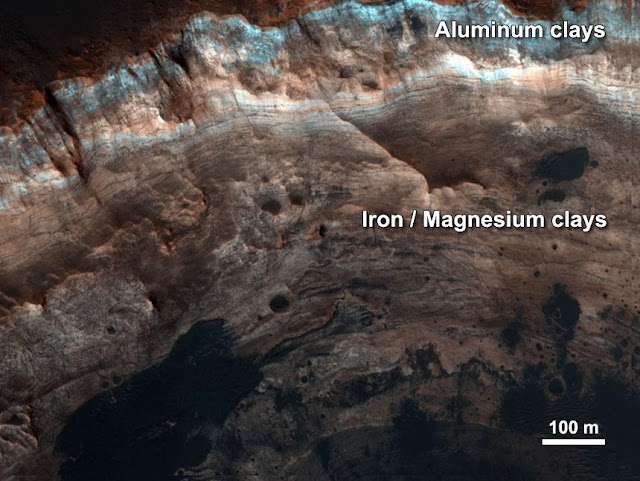
Close up image of a region of stratified clays in the Mawrth Vallis region of Mars
Is also conveniently close to a safe landing site.

Here the landing site is on the gray raised flattish area between the two red deposits (slide show for Mawrth Vallis by one of its proponents for the Curiosity landing site selection).
This may be the most likely site for ExoMars to visit.
POLAR ICE DEPOSITS
ExoMars with its ground penetrating radar discovered that both polar ice caps have layers of ice up to 3.5 kms deep, and that there are thick layers of ice extending over a much larger area than the visible ice caps, mixed with soil (enough frozen water to cover entire surface of Mars with liquid to a depth of 11 meters).
Mars Express radar images of south pole of Mars - showing layered deposits of ice up to 3.7 km deep.
Complex patterns of ice in the Mars South Pole
The Mars ice caps have layered deposits which surely have trapped bubbles preserving fluctuations in the Mars atmosphere composition. Way back in 1976-8, a group of scientists in Purdue developed an idea for an ice core sample return from the Martian south polar ice cap. The idea was to send a core driller to Mars to dig a 50 meter core and then return this to Earth.
More recently, there's this idea for a Martian Cryobot to explore the layers of the Martian ice caps by a team at Cornell university
Evolution of design for mini cryobot to explore the Mars polar ice deposits
However the top layers at least of the polar ice caps must date from recent times, the last million years or so. In our search for ancient life, we need to look a bit further afield.
Here the most interesting area perhaps is the area around the polar ice cap, the Dorsa Augusta, of late Noachian, early Hesperian period.
These ridges are interpreted as eskers in the Dorsa Argentae region - places where water flowed under the ice in the late Noachian period.
PHOENIX LANDING SITE
This shows the surface of Mars from Phoenix, notice the polygonal patterning, similar to permafrost patterns on Earth,
Phoenix landed in the basin of the Noachian northern sea on Mars. The area is rich in ice and salts. It landed at a far north lattitude, and as the area gets covered with a meter or so of dry ice in winter, was not expected to last the winter. Indeed it stopped functioning before the seasonal dry ice arrived. It would be a challenge to send a long lived rover to such a place.
But more southerly locations on the Vastitas Borealis outside the area of the expanding ice cap wouldn't have that problem.
OCEAN BEDS AND SALT LAKES
Salt is great for preserving organics. They could well preserve organics from times when the conditions were warmer and the water less salty.
Also there are microbes that can live in extremely salty environments such as salt pans and salty seas. Perhaps there are or were microbes on Mars like Halobacterium sp. NRC-1 which can withstand extremes of UV, radiation, and salt concentrations.
BTW halobacteria are not actually bacteria as the term is understood today. They are archaea but were given their name before the archaea were split off from the other types of microbe.
"Because halophiles tolerate so many forms of environmental stress, they are candidate “exophiles”—organisms that might survive on Mars or other planets. They might also be capable of surviving travel between planets--for instance, encased in salt crystals and thus protected from damaging radiation. When researchers working with the European Space Agency launched the halophile Haloarculastrain G, the organism survived for several weeks in deep space without protection, longer than any other vegetative cells. .... Moreover, several Martian meteorites, including the Shergotty and Nakhla meteorites, contain halite salt crystals, which could also be a vehicle for the interplanetary transport of halophiles. Finding entrapped halophiles within brine inclusions in ancient halite deposits on Earth thus is a subject of considerable interest."
- from Extreme Halophiles Are Models for Astrobiology - Tolerance of extremes in salinity, radiation, and temperature may permit halophiles to survive elsewhere in the universe
So where can we go on Mars to look for salt deposits?
Well first, the ESA Mars Express detected low density materials to a depth of 60 to 80 meters over the northern lowlands of Mars, probably materials deposited in the ancient oceans. So those certainly seem of interest if we can dig deep enough or find exposed materials from deep down.
OPPORTUNITY LANDING REGION - SALT PANS - AND HYDROTHERMAL VENTS FROM NOACHIAN PERIOD
Another good spot to visit might be the Opportunity landing area (further south). It has found extensive evidence of salt deposits, for instance in Endeavour crater. It's also found evidence of Noachian period hydrothermal vents. Definitely an interesting area for search for early life on Mars.
Endeavour crater on Mars (false colour to simulate a sunny day on Earth as with most photographs of Mars - hence the blue sky),
Photographed from the ground by Opportunity - has salt deposits, and was probably a salt pan in ancient Mars. On the rim, Opportunity found ancient deposits probably of Noachian age which showed evidence of hydrothermal vents.
Ancient salt pans may be a good place to drill to find signs of life deposited from the oceans of Mars, or halophiles that inhabited salt pans.
Many other probable salt pans are known on the surface of Mars - from orbital photographs and analysis by the orbiters.
CRATER IMPACTS
Recent meteorite impacts can excavate material from below the surface. They hit Mars all the time, and this is a recent one which hit Mars in 2012, creating a crater 30 meters across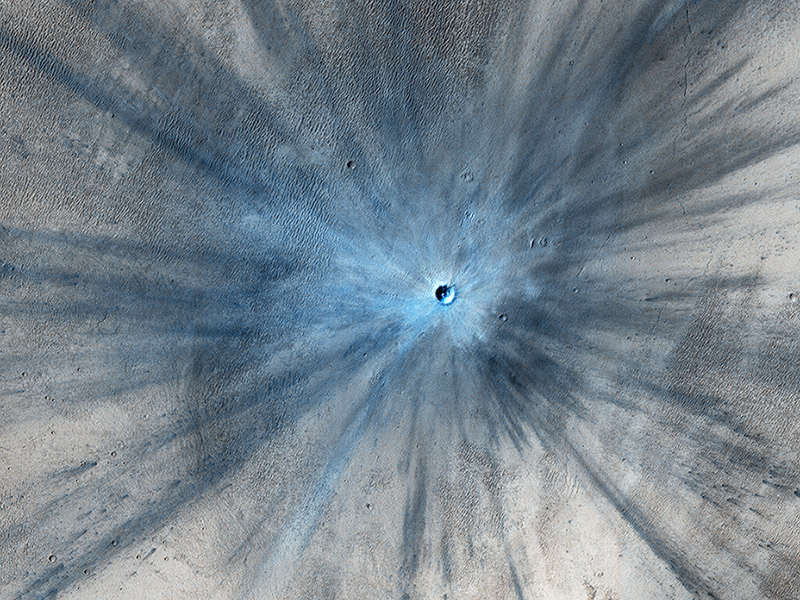
Mars has 200 new craters a year globally with diameter 3.9 meters or more (it has more meteorites than Mars because it is closer to the asteroid belt and has no atmosphere to absorb the impact). This one is particularly striking and the crater itself has a diameter of 30 meters. It's in false colour, the blue shows area that are less red than the rest because the dust got blown away by the impact debris.
Recent craters would excavate materials from below the surface, and expose the sub surface, make it easier for our rovers to examine them in pristine condition.
Here is another recent impact, interesting because it has excavated ice from deep below the surface.
Recent 8 meters diameter impact crater in 2008, in the Arcadia Planitia region of Mars excavated almost pure ice, shown white. This will soon sublimate away in the thin Mars atmosphere. Craters on Mars can give us a window into materials below the surface.
One idea is to explore the source crater for ALH 84001, the famous meteorite that might have traces of life from Mars - after all it's the oldest meteorite we have from Mars, dating back to early Noachian period, has possible signs of life in it, and it is the result of an impact on Mars only 16.5 million years ago.
If we can find its source, it also gives us ground truth on Mars.

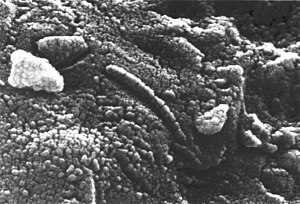
ALH84001 - famously the meteorite which was announced by NASA as showing signs of life from Mars. But was later downgraded to ambiguous as the same features could be created without life.Scientists searched images of Mars to find its source crater, and two candidates seem most promising.
So (this is my own idea) - what about sending a lander to the crater on Mars which it came from? Whether or not this is life, it is from 4.5 billion years ago and there is evidence that it was originally deposited in near surface warm water at 18 C in ancient Mars.
Mars "Splosh" creator suggesting impact into ice rich area. This is one of two possible origins for ALH84001
ALH84001 is no longer the oldest meteorite from Mars. It used to be thought to be 4.5 billion years old but new research suggests it may be 4.1 billion years old. Another meteorite has been found containing ancient zircons from Mars 4.44 billion years old, so from only a few hundred million years after the planet formed.
This is NWA 7533, nick name "Black Beauty" which is a mixture of different aged rocks but contains zircons from 4.44+-0.9 billion years ago, which is amazingly early, formed in the first 100 million years of our Solar System.
Black Beauty - the wettest meteorite from Mars and the only regolith breccia from Mars (mix of many surface rock fragments stuck together to make a single rock), like a library of 18 different rock types. It was picked up in the Sahara desert by Bedouin nomads who sold it to the scientists. When they realised how interesting it was, the nomads then went back and collected many other meteorites from the same debris field for the scientists.
Short news story about the meteorite
For more technical details, see video of Carl B. Agee talking about the meteorite here
(he describes the zircons at 23 minutes into the video, as two populations, one of age of 1.5 billion years and another population of age 4.4 billion years.)
Note, there's a glitch in this movie - no sound 44 minutes in when he plays the shorter video above, with a link to the video. I think it is must be some automatic google youtube detection and silencing of the sound when it finds one youtube nested inside another - Sound resumes at 46.46 for the questions.
I haven't seen any suggestion for the source crater for this meteorite. It is one of several Martian meteorites all collected in the same debris field in North West Africa so all from the same source meteorite (which probably broke up in mid air like the Murchison meteorite) - and same original impact on Mars. These are the only regolith breccia meteorites known from Mars (regolith here means the lose materials that cover the surface of the planet and a breccia is mixture of rock types cemented together). This makes it like a library of early rocks on Mars (so far, 18 different rock types). Judging from its composition, it probably came from the Southern uplands on Mars. It's also the most water rich Martian meteorite found, and shows signs of interaction with the early Mars atmosphere, and some of the clasts (component rocks) are highly alkaline similar to some of the rocks found by Curiosity. Many details about it here.
It's paired with NWA 7034, which has a radiation exposure age of 11 million years (in the video he says 5 to 11 million years). Once you have the date, it should be possible to search for similarly aged recent impact craters on Mars of the right size, as for ALH 84001, but I haven't yet found a paper which attempts to identify its source.
Anyway if we do identify its impact crater on Mars, it seems likely to be another interesting ancient place to explore, which may have evidence of ancient Mars, freshly exposed to the surface by the impact.
CAVES
Mars does have caves, but the only ones we've found so far are lava tube caves. These are interesting though, as they could trap volatiles in the Mars atmosphere and may have layered deposits a bit like the polar ice caps.

Mars surely has water carved caves as well, like the ones we have on Earth where water flows and cuts through rocks, but these would be hard to spot from orbit.
The main problem with targeting caves is, how do you explore them? How can a rover get into them safely, and how can it continue to communicate with Earth underground?
Here is Penelope Boston, back in 2008, talking about potential for present day life on Mars in caves, and the possibility of exploring them with a swarm of nanobot cavebots. We could find evidence of past life in caves also.
The company Astrobiotics is under a contract from NASA to develop methods for exploring caves on Mars and the Moon with spelunking robots

This shows their Tyrobot in testing on Earth - it uses a suspended cable strung over the cave (Tyrolean traverse style) and then lowers a sensor package or rover to the cave floor.
AVAILABILITY OF NITROGEN IN EARLY MARS
Nitrogen is essential to life. What's more it's likely to be needed by XNA based life also. Nitrogen is so vital for life that exobiologists have suggested it's as important for our rovers to "follow the nitrogen" as to follow the water.
It's important because nitrogen mediated hydrogen bonds are easily broken and are central to biology as we know it. So even if life on Mars is very different from Earth life, perhaps using different amino acids for instance (see Alien life could use an endless array of building blocks) and perhaps use PNA or some other form of XNA (Xeno nucleic acid) with a different backbone from DNA, still it is likely to use nitrogen if it resembles Earth life.
Diagram of helical structure of a protein, showing how the nitrogen mediated hydrogen bonds hold it together
How Nitrogen mediated hydrogen bonds are used in DNA
For more, see Searching for Organics in a Nibble of Soil. Diagrams credit J. Bada.
See also Seeking signs of life on mars: in situ investigations as prerequisites to sample return missions which goes into the importance of the search for nitrogen on Mars, as well as other considerations to guide our search there.
Nitrogen is the one element necessary for life which seems to be in short supply on present day Mars . There is some in the atmosphere but only 0.2 mbar. This may be too little for nitrogen fixation by life processes.
If nitrogen was in similar short supply on early Mars then we might need to search for regions rich in nitrates to find life.
Nitrogen can be fixe]#d by volcanic processes and lightning. It can also be delivered on meteorites, as some carbonaceous meterorites are rich in nitrogen.
It can also be fixed by chemical reactions. A recent (2012) paper suggests fixation by reaction of FeS with NO might be a significant process in the primordial Martian atmosphere.
It can also be fixed by meteorite impacts. This may be the dominant process in early Mars. The very early Mars had far more nitrogen, between 200 and 600 mbar, so between 0.2 and 0.6 bars of nitrogen (present day Earth has 780 mbar).
One estimate suggests that 80 to 150 mbars of Nitrogen was fixed by the impacts of giant meteorites on early Mars. If this is so, then much of the nitrogen would get washed into the northern lowlands, and assuming that about 100 mbar was fixed in this way globally, then the authors suggest that a layer 100 m deep with 10% mass fraction of NaNO3 in the northern lowlands is plausible. See Nitrates on Mars: Evidence from the 15/14N isotopic ratio
Nitrogen can also dissolve in water and snow in the atmosphere as HNO3 (created partly in the stratosphere and partly through photochemical reactions in the lower atmosphere) and reach the surface that way. This is a slow process but it's the main source of nitrates in the McMurdo valleys. Typical fluxes of atmospheric NO3 in the McMurdo dry valleys are between 1 and 2 µmol / m2 per year (measured using snow pits))
This also might be the main process by which nitrates get into the Atacama desert. The surface is so poor in nitrates that you wouldn't be able to detect it with a spectroscope. But deep down, about a meter below the surface, the Atacama desert has one of the richest nitrate deposits in the world. Assuming average nitrate rates of 7.76 % by weight, for the upper 1 meter of the soil, and deposition rate from the air of 0.016g /m2 per year the time to deposit the nitrate deposits has been calculated at 9.9 million years. See Nitrate Concentrations in Atacama Desert soils and Their Implications for the Antiquity of the Atacama Desert. As it turns out, recent research suggests another possibility - that the nitrates in the Atacama desert may instead come from marine sediments via ancient ground water - but the calculations still stand.
Abandoned nitrate factory (Saltpeter) in abandoned city of Humberstone (Chile) - before the widespread use of artificial fertilizer, the mines in the Atacama desert were an important source of fertilizer.
The desert soils here are rich in nitrates below the surface, though there is little sign of them on the surface itself. Calculations show that the nitrates could have formed over a period of about 10 million years brought in on occasional fogs and rains.
According to recent research, possibly they originated in groundwater from marine deposits instead - but whatever the origin of the Atacama deposits, the original idea of atmospheric origin suggests the possibility of similarly thick deposits forming on early Mars through atmospheric processes in as short a time period as ten million years.
So - if similar processes applied on early Mars, then you could get rich subsurface nitrate deposits like those in the Atacama desert within 10 million years. It surely depends on the concentration of nitrogen in the atmosphere, so probably the time needed would be longer than that, in later Noachian and early Hesperian, as the nitrogen levels decrease.
Another way it can get to surface layers is through nitrogen fixation in pure water metastable thin liquid films (different from the salty brines habitat) on Mars (cooled below the point where they would normally freeze). See An active nitrogen cycle on Mars sufficient to support a subsurface biosphere.
There is at least some indigenous nitrogen on Mars, as Curiosity detected recently. But it might have been patchy in Noachian Mars, and so in short supply in some areas. For instance as with the present day Atacama desert, the nitrogen might be present, but buried deep, so unavailable to surface life, though useful for subsurface life.
Or it might get washed away by rain and rivers and accumulate in particular spots which would then be favoured for life. Perhaps the northern lowlands, or the Hellas Basin or other low places are a good place to search for early life. But on the other hand - some of those places, such as the Hellas basin have been filled up by so many kms depth of deposits that perhaps any nitrates were covered over too quickly to be of much use for life.
See also this post on the New Mars forum: Nitrogen on Mars, where I found many of the references here.
NITROGEN FIXATION ON EARLY MARS
Though nitrogen fixation is probably impossible on Mars now, it's possible to fix nitrogen at much lower levels than present day Earth. I can't find much about this for some reason, but found this 1989 paper, Biological nitrogen fixation under primordial Martian partial pressures of dinitrogen. The authors grew Azotobacter vinelandii and Azomonas agilis under conditions of low nitrogen levels, though at full atmospheric pressure and found that they could continue to fixate nitrogen down to 5 mbar. However they found no evidence of fixation below 1 mbar.
This seems promising for nitrogen fixation into the late Noachian and early Hesperian period. Though of course - that depends on the life developing the ability to fix nitrogen in the first place.
DEEP SUBSURFACE LIFE
This is life kilometers below the surface. ExoMars can only drill a couple of meters, However craters can excavate deep below the surface and expose the material in their central peaks. Recent discoveries in 2010 of carbonates and hydrated sillicates on the peak of Leighton crater excavated from 6 km below the surface suggest that this was an ancient hydrothermal vent habitat, so is of great interest for the search for life. What's more, it's of Noachian age so can give us a window into what this deep subsurface habitat was like in the Noachian period.
The alternating dark and light layers in this photograph (slanting up towards the right) show carbonates (light coloured) and chlorites (dark coloured).
This rock originally was 6 km below the surface of Mars, and was excavated by the meteorite that formed the crater in the Noachian period. Our rovers might be able to visit it in the future, and it's been suggested as a possible target site for them.
Another likely candidate is McLaughlin crater, which penetrates 1.6 km below the normal surface of Mars and has iron and magnesium bearing clays and carbonate minerals. As there are no inflows or outflows, then this may have come from groundwater. It's suggested as a prime target in Nature, as a place likely to preserve organics and to give evidence of ancient Mars life, especially deep subsurface life.
So, it's possible that our rovers could find evidence of deep subsurface habitats as well, depending where they are able to go on Mars.
Earth has a separate biosphere of life deep below the surface. This may make up as much as half of all the biomass on our planet. When you get to a few kilometers below the surface of Mars, then the pressure and temperature both rise to the levels where water would be stable in liquid form.
So as for Earth, there may be a deep subsurface habitat on Mars. If it exists and is inhabited by life, it may be by far the most abundant habitat on Mars in terms of biomass. If so, we could drill down to it with robotic moles to find out if there is life there today.
The cryosphere on Mars is the region of permanently frozen ground, where water can only exist as ice. It extends from just below the surface down to depths of a few kilometers. Below that, any water would be liquid, protected from the vacuum of the surface by the pressure of the rocks above and heated by geothermal heating. Some of this may be able to escape to the surface. Illustration from Groundwater activity on Mars and implications for a deep biosphere (Nature, 2013)
If we are lucky or are able to send our rovers to places like Leighton crater or McLaughlin crater, we can find out about this habitat on Mars was like in the Noachian period as well. Was life able to colonize it right away in the early solar system? Or was this a later development? Or did it never happened at all? So far, nobody knows the answers to those questions.
MAY FIND LIFE IN UNEXPECTED PLACES
Even on Earth, we get surprises sometimes when we look in the most extreme places for life.
The Dry Valleys analog to Mars suggests that conditions favorable to permit life (as we know it) are likely present in some places on Mars even now. If life is present it may be hard to find, however, because it may be distributed like life in the Dry Valleys, i.e. scattered heterogeneously and apparently even absent from some places. If the Dry Valleys analog holds true, martian life might not be found in the most obvious-seeming places either. Mahaney et al. for example, discovered that life was closely associated with salt-rich horizons rather than others that might seem to us to be less hostile to life. The heterogenous nature of life in the Dry Valleys indicates that in order to search for life on Mars, many samples will be needed. Sampling locations should include different climate regimes, different locations within each regime, and different depths beneath the surface.
Antarctic Dry Valleys and indigenous weathering in Mars meteorites: Implications for water and life on Mars
UNINHABITED HABITATS
This is something that Charles Cockell has explored in a series of articles. His latest is Trajectories of Martian Habitability.
One thing that greatly complicates the search for life on Mars is the possibility of uninhabited habitats. On Earth, if you find a habitat with all the conditions that life needs to survive, you expect to find life also. The only uninhabited habitats are new ones, such as recently cooled lava flows, or artificially created habitats such as petri dishes, or occasionally in very extreme conditions such as patches in the McMurdo valleys (as mentioned in the quote above)..
On Mars though some or all of the present day habitats may well be uninhabited. Perhaps life never evolved, or it evolved but became extinct, or it just takes a long time for life to colonize a new habitat in the harsh conditions on the surface of Mars. Perhaps it takes hundreds of thousands of years or millions of years for life to colonize a newly formed habitat on Mars.
UNINHABITABLE LIQUID WATER ON MARS
You also have the complication that water on Mars might not be habitable at all. Almost all places on Earth where you find water, or even water vapour from the atmosphere, you also find life, including salt lakes, concentrated sulfuric acid, permafrost, and places like the Atacama deserts and the McMurdo dry valleys. But you could get liquid water on Mars in conditions even more inhospitable for life than any of these.
A nice example of an uninhabitable water rich environment on Earth is honey. Though it's got plenty of moisture, the water activity level is too low and it also has anti-microbial properties. No life can colonize it; though spores can survive there in dormant form.
Some regions of Mars could be water rich but not be available for life to use. Reasons could include, too much by way of salts (including chlorates, and sulfates), too much acid, or lacking essential trace elements and nitrogen.
This is a special challenge for present day life on Mars; because ice sublimes directly to water vapour in the vacuum atmosphere, so only salty brines could be stable - and these may be too salty for life to use. So on present day Mars there's a fine line between water that is salty enough to remain liquid and water that is so salty that life can make no use of it.
EARLY LIFE NOT SO VERSATILE AS PRESENT DAY LIFE
You might think that uninhabited habitats would be rare in the early Noachian, so long as life evolved on Mars at all. It had oceans covering much of the planet, and organics delivered to the planet from comets and meteorites. Unless its water was extraordinarily acid, or salty, then surely it must have had life almost anywhere?
However, if you start thinking in terms of early life, before the evolution of all the capabilities of modern microbes, and before the evolution of the first archaea on Earth even, the early Noachian may not seem so hospitable after all. For one thing, nobody knows when photosynthesis first evolved on the Earth. Perhaps it was present almost from the beginning, but maybe it developed far later.
In an early Mars without photosynthesis, life would be confined to places where it could take advantage of chemical energy. Perhaps it lived in hydrothermal vents, but there are many other ideas for abiogenesis (origins of life). Some think that life could have evolved in icy conditions, where melting and refreezing ice concentrates organics (eutectic freezing). Or it might have evolved on a clay substrate in a hydrogel which experimenters found can be used as a "cell free" medium for protein production from DNA, amino acids, enzymes and some components of cellular machinery. Or perhaps it evolved on pumice rafts.
Pumice and ash floating on Lake Nahuel Huapi, Bariloche, Argentina
One theory of the origin of life (amongst many) is that it might have started in pumice rafts like these. If this is what actually happened on Mars, and if it took it some millions of years to evolve to the stage where it could colonize harsher conditions, then we might have to search for pumice rafts to find evidence of the earliest life on Mars.
This is one out of dozens of suggestions for the origins of life. The hydrothermal vent hypothesis is perhaps the most popular but there are many others.
Another theory is that it originally evolved kilometers deep underground, rather than on the surface.
Wherever life started on Mars, the big question then is - how long did it take to spread to other habitats? If it remained in its original habitat for hundreds of millions of years, we might have to look for the exact same habitat to find it.
HOW LONG DID IT TAKE FOR THE FIRST ARCHAEA TO EVOLVE
Well according to one estimate, the history of the Earth is not long enough for them to evolve. These researchers plotted the increase of complexity of non redundant nucleotides in DNA. As life increases in complexity, it follows a near straight line on this log plot, through many different changes of structure of organism, from the prokaryotes, to the Eukaryotes with nuclei, worms, fish, and mammals
They traced the timeline back, expecting it to cross the zero line at the time of origin of life, and found that the zero line is nearly ten billion years ago, over twice the history of the Earth.
This diagram shows the complexity of the DNA as measured using the number of functional non redundant nucleotides.
This is a better measure of the genetic complexity of the organism than the total length of its DNA. Some microbes have more DNA than a human being - much of that used for other purposes rather than for genetic coding, the so called C Value Enigma. Measuring it this way deals with that issue.
Notice that the prokaryotes are well over half way between the amino acids and ourselves.
They tentatively suggest that this might be evidence that life on Earth actually originated around other stars, and was transferred into the early solar system as the nebula condensed by meteorite impact transfer (for instance another star with a life bearing planet passing through the condensing solar nebula could do that).
If that's right then we might expect life to be abundant in our early solar system, as Mars must surely have been infected by this life just as Earth was, and share DNA etc. All life might be based on DNA (or you might get a hybrid situation where some primitive XNA based life also evolves in favoured spots in the solar system).
The other possibility is that life evolved far more quickly in the early solar system than the log plot suggests. For instance, it was probably not DNA based back then, and that might make a difference. If so then we might find pre-archaea on Mars.
If so, their study usefully highlights quite how much evolution was needed to get from there to the modern archaea. Judging by nucleotide complexity, you'd expect that as many stages of evolution were needed to get from non living chemistry to the early archaea, as were needed to get from the early archaea to modern mammals.
Also looking at this another way, it's a huge increase in complexity from 10s of nanometer scale cells to the hundreds of nanometer scale modern cell already present in the most primitive archaea, with DNA, RNA, transcriptase, enzymes, proteins, and maybe a million different chemicals operating together to keep the cell alive and functioning. This modern cell transcription mechanism, chemistry, cell walls and metabolism might well have taken hundreds of millions of years to develop.
The first primitive cells were surely far smaller and can't possibly have been as complex as this. Perhaps they used only a few different chemicals.
So, wherever the life originated on Mars, it might well have taken some time for it to evolve from the primitive tens of nanometer cells to robust forms of life that could adapt to other conditions. So, it might well have remained in that habitat for some considerable period of time, maybe for most of the Noachian period or longer.
EARLY PRE-ARCHAEA TYPE LIFE ON MARS COULD BE EXTREMELY LOCALISED
We might, for instance, find the primitive pre-archaean cells only in the hydrothermal vents in the early Noachian period. Other apparently equally habitable areas could be devoid of life. Also, it would be hard for such primitive life to transfer from one vent to another, to start with at least. So, even the hydrothermal vents of the Noachian period might not all have life in them. Or different vents might have life, or protobionts, that developed independently through different pathways.
The first cells also might not have reproduced like modern cells with their complex transcription methods and error correction. If they could reproduce in the modern sense, yet it might be with many errors and changes, and not reproduced as exactly as present day cells. Early life might have got going in fits and starts, with the first cells easily going extinct. Perhaps remains of one attempt at life provided the raw materials for the next attempt until finally it succeeded long term. And protobionts might not have had any informational coding molecules at all.
The main problem is we have no timescale for this. Of course life must start somewhere, or several places at around the same time perhaps; but how long does it take for it to develop a robust reproduction system, to develop the ability to colonize many different habitats, and to spread from these starting points to cover a planet?
It might have needed millions or hundreds of millions of years in stable conditions such as hydrothermal vents for primitive pre-archaea to evolve to the complexity of a modern cell. Or maybe all this is possible within a million years or less. Nobody knows. We can't create these conditions in a laboratory and have no evidence at all from early Earth.
ALTERNATIVE OF RAPID DEVELOPMENT OF ARCHAEA OR LIFE OF SIMILAR ROBUSTNESS AND COMPLEXITY
So, the other way around, life might even have evolved more rapidly on Mars than it did on Earth. After all there was no moon creating impact, and Mars doesn't seem to have had global magma oceans even in the early Noachian. The impacts from the Late Heavy Bombardment on Mars were probably survivable by life. Also Mars was a very different planet with shallow oceans and quite possibly freezing conditions early on (which may be a benefit if you take the view that eutectic freezing helped to concentrate organics and encouraged evolution of life).
So, at the other extreme, life on Mars might have evolved far more rapidly, all the way to photosynthetic life by the beginning of the Noachian period. Who knows, perhaps it evolved even to multicellular life.
One recent paper by some researchers in Oxford, as a result of looking at differences between Mars meteorites and the composition of surface rocks measured by Spirit rover, suggests that Mars might have had an oxygen rich atmosphere in the Noachian period 4000 years ago.
So there are many possibilities for early Mars. It might have been totally uninhabited. It might be inhabited but only in special locations, such as hydrothermal vents, or rock pools on ocean margins, or deep underground. Or it might be inhabited almost everywhere, so that you can find traces of early martian life in any habitat with conditions suitable for modern life, so long as it was buried in conditions nsuitable for preservation of the organics.
There is no way to decide between these various scenarios on theoretical grounds. The only thing we can do is to search, everywhere we can think of, and see if we can find it. We might finally find the first traces of early life on Mars in some unexpected place nobody predicted.
RETURNING SAMPLES FROM MARS - PERHAPS UNLIKELY TO FIND LIFE IF NOT ALREADY DISCOVERED
NASA has made it a priority for the next twenty years to return a sample from Mars for analysis on Earth. ESA has also proposed it as a flagship mission.
Artist's impression of Mars sample return vehicle launching from Mars - credit ESA.
However, since we don't know where to look yet, for both early and present day life, and since Mars is such a complex planet, with such varied terrain to such, there is quite a risk that such a sample might fail to return material of biological interest. Probably we can only be reasonably confident of success if we have detected biosignatures on Mars already. Even if it contains organics, the organics might not arise from life.
So, if we want to find traces of life on Mars, it seems pretty clear, that we need to find it in situ on Mars first, just for reasons of expense. The NASA plans would return a few hundred grams of crushed samples at a cost of billions of dollars, and this is too much to spend to return a sample that has only a small chance of containing any material of interest to exobiologists.
It's true that once returned, we can analyse them over and again with more and more instruments - but that's only useful to exobiologists if we return the right samples in the first place. While we can send increasingly sophisticated instruments to Mars to study it in situ and explore a far wider range of possibilities there.
It's quite possible however, that ExoMars, or one of our other rovers, will find clear biosignatures of life on Mars. If that happens then exobiologists will probably be keen to return these samples to Earth for analysis. Can this be done safely?
SUGGESTION FOR PROTECTION OF EARTH DURING SAMPLE RETURN - IONIZING RADIATION
I won't go into this in detail, why protection of Earth is needed, as you'll find plenty about it in my other articles, see Need for Caution for a Mars Sample Return - and Could Microbes Transferred On Spacecraft Harm Mars Or Earth - Zubrin's Argument Revisited
But in brief, life from Mars could be benign, but it could also be capable of competing with Earth life. In the worst (but most interesting case) Martian life could be XNA, capable of setting up an independent self contained ecosystem on Earth. Martian cells could also be far smaller than Earth life, as the earliest cells before the archaea must have been at most a few tens of nanometers across, about a tenth of the size of the smallest known modern cells (the ultramicrobacteria). Or, if it has a common origin with Earth life, could have capability of transferring genetic material via Gene Transfer Agents, as archaea are able to swap material very readily in this way, and the GTAs are again only a few tens of nanometers in size.
In the XNA specifications section of this paper: Xenobiology: A new form of life as the ultimate biosafety tool The authors talk about biosafety requirements for this procedure
"The ultimate goal would be a safety device with a probability to fail below 10-40, which equals approximately the number of cells that ever lived on earth (and never produced a non-DNA non-RNA life form). Of course, 10-40 sounds utterly dystopic (and we could never test it in a life time), maybe 10-20 is more than enough. The probability also needs to reflect the potential impact, in our case the establishment of an XNA ecosystem in the environment, and how threatening we believe this is."
Since XNA from Mars could also potentially set up an XNA ecosystem in the environment on Earth, we need to be similarly careful when considering its impact.
This all makes it extremely hard to contain reliably, especially when you don't yet have a thorough understanding of what it is you need to contain. It is not too bad so long as you keep the specimen in the capsule, but as soon as you remove samples for analysis, it's hard to see how you can keep it completely enclosed to ten nanometers level - as the optical resolution for the best high powered microscopes is around 200 nm. There's also the risk of damage to the capsule, and loss, theft, natural events such as hurricanes, or airplane crashes, or human error leading to accidental release.
However one possibility is to use ionizing radiation.
Ionizing radiation is not used for sterilizing spacecraft to Mars because gamma radiation destroys semiconductors. But with a Mars sample return, you don't need to sterilize an entire spacecraft. The only part that gets returned to Earth is the sample itself in its container. The rover remains on the Mars, just launches the container to orbit around Mars, and the container is picked up by a separate orbiting spacecraft.
So, my suggestion is, for the first sample returns from Mars, why not use ionizing radation? Subject it to enough ionizing radiation to thoroughly sterilize even the most radioresistant microbes known such as radiodurans and chrooccocidiopsis or halobacterium. Modern analysis techniques would still permit us to learn a lot from a sample sterilized in that way.
Actually I'd subject it to more ionizing radiation than that. Radioresistant organisms on Earth don't seem to have adapted to high levels of radiation particularly, as they can never encounter those environments (except in very rare situations such as natural nuclear reactors in deposits of enriched uranium in the early Earth). Instead they probably developed radioresistance as a side effect of adaptations to extreme dry conditions and UV, which damage DNA in a similar way.
But on Mars any life would evolve radioresistance specifically in response to ionizing radiation. So, life on Mars may be even more resistant to radiation than the most radioresistant microbes on Earth.
The most extreme example of radioresistance on Earth seems to be Thermococcus gammatolerans - an obligate anaerobe from hydrothermal vents which was able to continue to grow after irradiation by 30 kGy of gamma radiation (applied at a rate of 60 Gy per minute).
Thermococcus gammatolerans - an obligate aerobe from hydrothermal vents, the most radioresistant organism known, able to withstand 30 kGy of gamma radiation, and still reproduce. That's about 400,000 years worth of surface radiation on Mars at the radiation levels detected by Curiosity during the current solar maximum of 0.073 Grays a year - possibly it could survive surface radiation for longer than that when you include periods of solar minimum.
This micro-organism didn't evolve in an environment with high levels of radiation, but developed this resistance as a side effect of other effects that can damage DNA. Microbes on Mars would have evolved in an environment with high levels of radiation, and adapted specifically to that environment. They might be even more radioresistant than this.
So, it looks as if you'd need to use at least hundreds of kGy to be safe. There wouldn't be much left of complex molecules after that, sadly, such as the carotenoids, but the chiral signal of amino acids would be strong, even after 14 MGy. If these are samples of early life on Mars, then 14 MGy is approximately the dose the microbes received anyway from natural nucleotides in the rocks. So, for samples of ancient life, a radiation dose of a few MGy is maybe not much of an issue, except for the remote possibility of revivable ancient life, or life retreived from pure ice, or from salt deposits with no radioactive isotopes in them.
So - that's my suggestion. For the very first sample returns from Mars, when we have very little idea of what is in them, the idea is to irradiate it with several MGy of radiation before you open it.
Safest of all would be to irradiate it in Mars orbit, before it returns to Earth, perhaps with gamma radiation, using Cobalt 60, as is standard in food and medical gamma ray sterilization. One idea, the Cobalt 60 could be included in a shielded container sent along with the spacecraft that picks up the returned sample in Mars orbit. That way, even before the sample leaves Mars orbit, it is put straight into the container along with the Cobalt 60 source, with the whole thing surrounded by thick layers of lead to protect the spacecraft itself from the radiation.
As is usual for Mars sample return proposals, you would do this in such a way as to break the chain of contact with the Mars surface. When the orbiter picks up the capsule, it carefully positions one capsule inside the other in the vacuum conditions of space without ever letting the exterior of the capsule touch any other part of the orbiter. So then only the interior of your return capsule, the part strongly irradiated with Cobalt 60 during the return journey, has any contact with material which has touched the Mars surface.
I don't know if that is practical; it is just a suggestion. The advantage is that it would be far less damaging to the sample than heat sterilization. Also sterilizing at Mars deals with the issue that the capsule could be damaged by a micro-meteorite during the return journey. It also replaces the immense complexity of the Mars handling facility on Earth with a relatively simple addition to the sample return mission.
You still want to take every possible care when handling it, and you might as well still return it to a biohazard handling facility (after all it might have harmful bioactive chemicals in it still). But the chance of release of extraterrestrial life with the ability to reproduce on Earth seem remote even at the 1 in 1020 level when you have a sample already thoroughly sterilized with gamma rays - and you no longer need to attempt the perhaps almost impossible task of containing it at the 10 nanometer level.
Alternatively, return the capsule to the L2 position (far side of the Moon from Earth) - without use of aerobraking, and using trajectory biasing to make sure it can't hit the Earth. Then sterilize it in L2 position before return to Earth.
If you want to do DNA sequencing of present day life, or perfectly preserved early life - or even XNA sequencing, you can do that on Mars using the ideas for a miniaturized DNA sequencer to send to Mars (SETG, already built and pretty much ready to fly). If you want to revive revivable ancient life, again do that on Mars, and other experiments that need unradiated specimens would be done on Mars to start with.
SUBSEQUENT SAMPLE RETURNS
After the first samples are thoroughly studied, then the situation can be reviewed. But probably we should continue to apply extreme caution until we have a very thorough understanding of the situation on Mars, because there might be a variety of forms of life on Mars.
For instance if the first sample contains DNA based life, this doesn't rule out the possibility that Mars also has XNA based life. You can easily imagine a scenario where past XNA life co-exists on Mars with more recent DNA based life introduced on meteorites, for instance, either in different habitats or in the same microbial colonies - and the XNA life might be hazardous for Earth life, and never made the transition here via meteorite.
I'd suggest that we need to continue to take these precautions even if we think the chance of contamination of Earth is extremely low. After all even if there is as little as a one in a billion chance or less of returning XNA to Earth able to out compete Earth DNA and establish a separate ecosystem here or take over from some Earth life-forms - that would still be a completely unacceptable level of risk to take according to many ways of thinking.
This is just a suggestion which I present for discussion.
Would this ionizing radiation, perhaps 2 or 3 MGy or so, be sufficiently sterilizing to make a sample return from Mars completely safe for Earth life even at, say, the 1 in 1020 level that seems necessary for novel existential risks? Would it also preserve the science value of the sample? What do you think?
SEARCH FOR EARLY LIFE ON CERES, OUR MOON, OR THE MOONS OF MARS
Though Mars is the most obvious place to look for evidence of early life, there are other places we can look too. First there's a chance that Ceres was the origin of life for both Mars and Earth. It seems to have got off lightly in the bombardment by giant meteorites in the early solar system, and likely to have had hydrothermal vents, and large amounts of water. And Hubble has recently detected water escaping from Ceres, so it has liquid water as well, in the present day solar system.
With these discoveries, Ceres seems a prime target for the search for origins of life.
Earth, Moon and Ceres to scale, for comparison. One theory suggests that Ceres could be the origin of life for Earth and for Mars. The Moon could be interesting for the search for life also, as it would preserve meteorites from impacts on early Earth, also on Mars and probably Venus too from the earliest solar system.
Then, during the Late Heavy Bombardment, large meteorites impacting on Mars, Earth, Venus, must have sent rocks throughout the solar system. After the Moon formed, it was a prime target for these rocks to land on. So we might well find meteorites from any of these places on the Moon. Perhaps a particularly good place to look might be the lunar poles, where the ice deposits would help to keep the meteorites from drying out - and search for meteorites deep below the surface, protected from cosmic radiation.
The same applies to Mars' moons. Phobos particularly might well have meteorite debris from early Mars which could possibly tell us things about the early Noachian period on the planet. See Why Phobos Might be the Best Place to go for a Sample Return from Mars Right Now
COMPLEX SUBJECT - DO BE SURE TO COMMENT
This is a very complex subject and this was my hardest article to write, so far, can only scratch the surface. It touches on a vast range of different disciplines. I know I have missed out many important and interesting possibilities.
I know some of you will be experts on some of these topics - do say if I've made any mistakes.
Also what are your own favourite places for our rovers to visit on Mars for search for early life and the origins of life on Mars?
If you've got any thoughts on this or ideas you want to share do say in the comments. Also of course if you have any questions about any of this.
NEXT ARTICLE
In the next one,I'll continue the theme of Our Spacecraft Could Look Straight At an Extraterrestrial Microbe - And Not See a Thing! with the search for present day life. You'll probably be surprised at the range of place our spacecraft and rovers could visit, where extra terrestrial life may exist right now in our solar system.






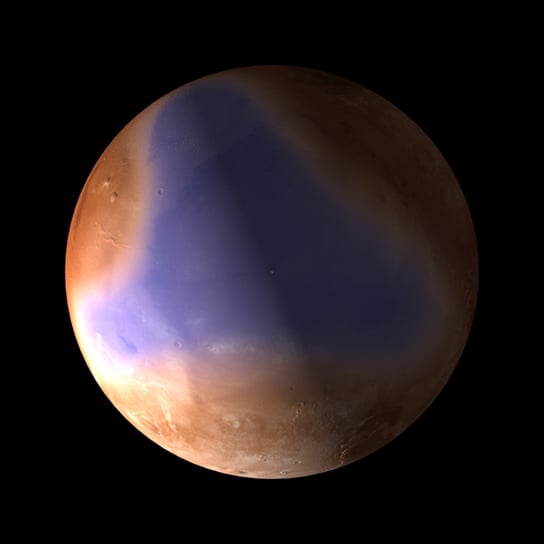


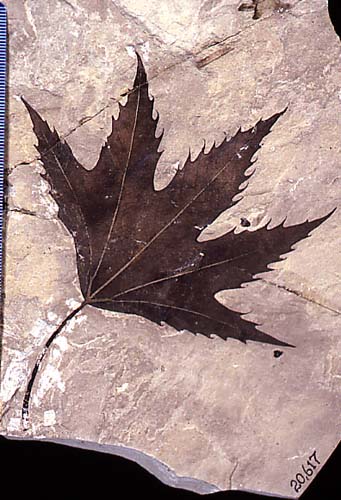
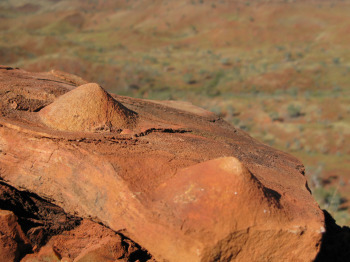



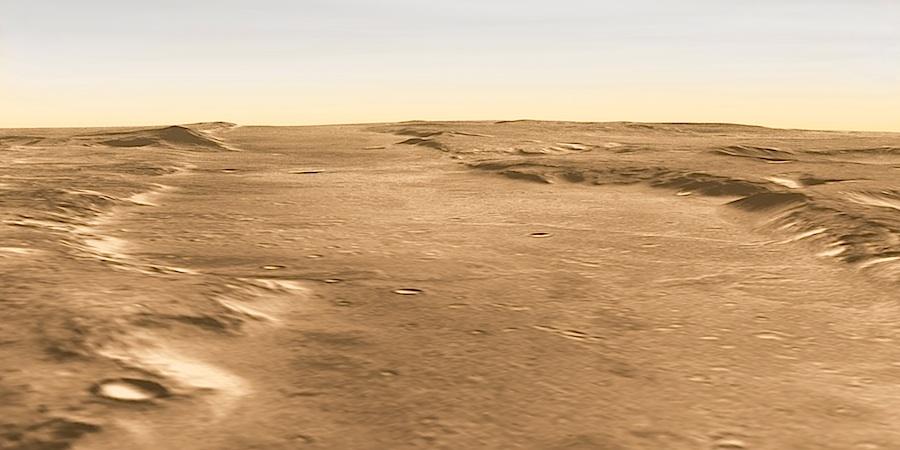
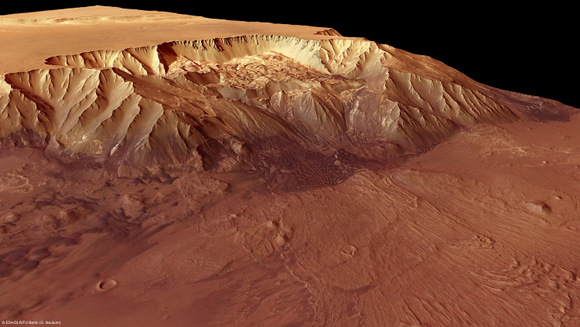

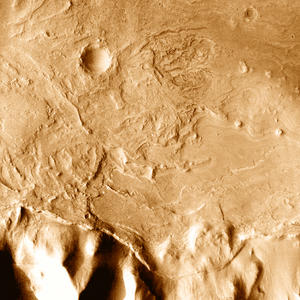




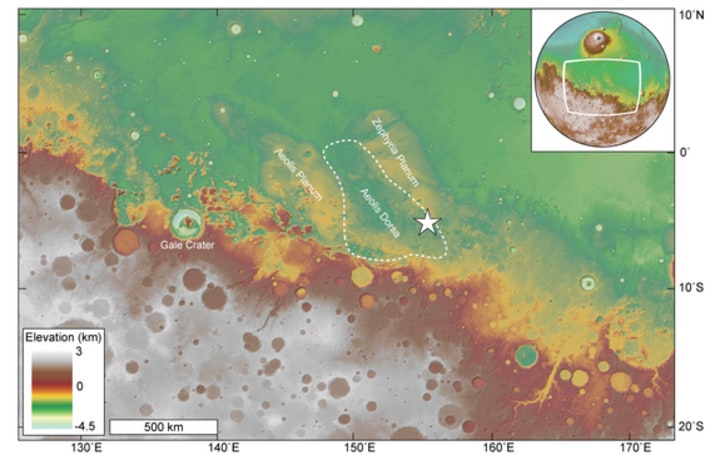
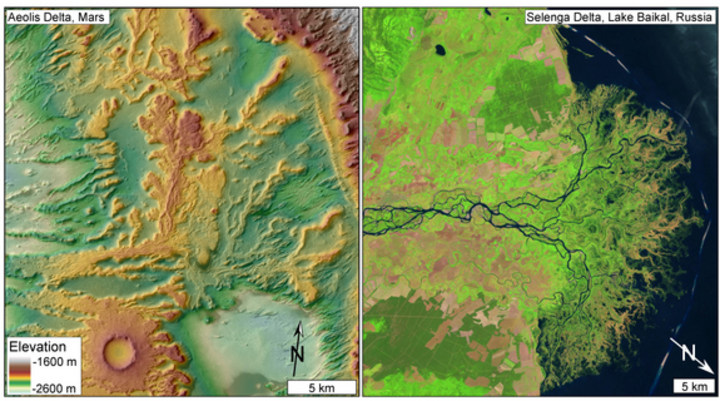


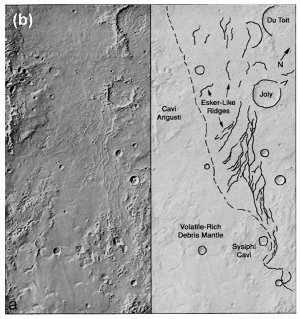

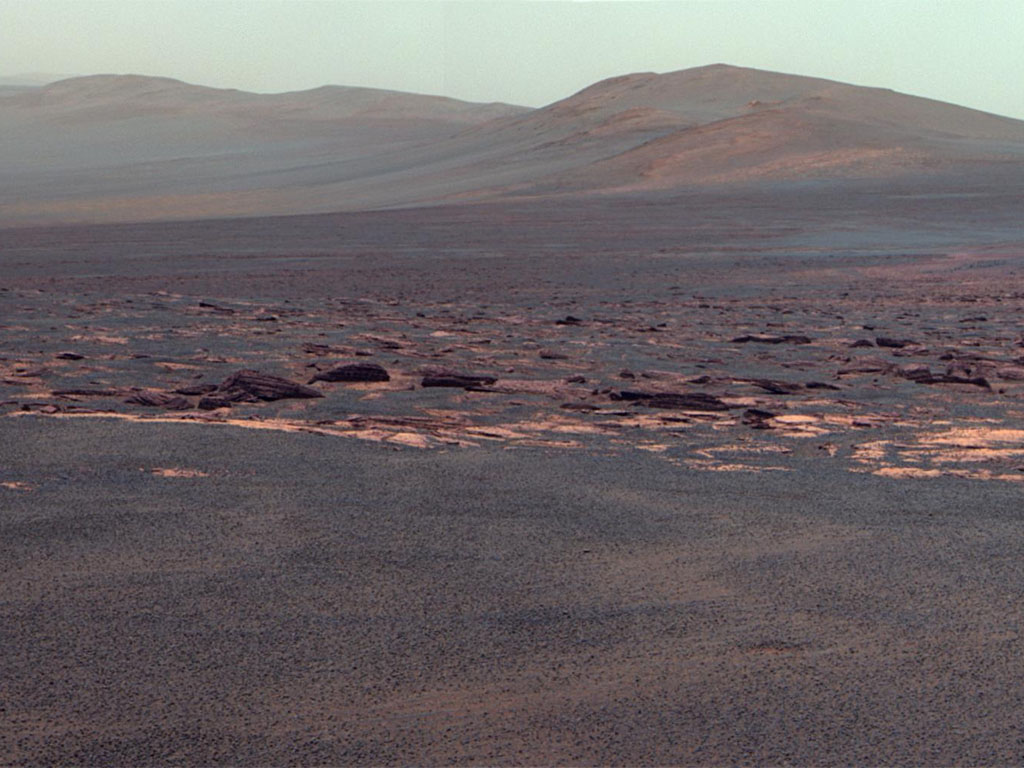




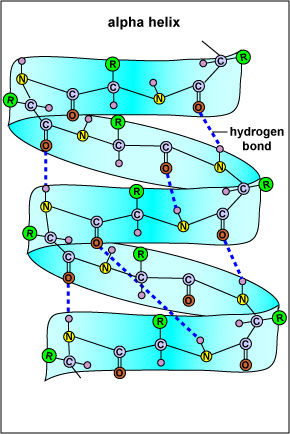
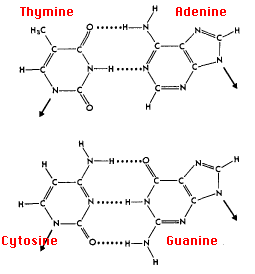




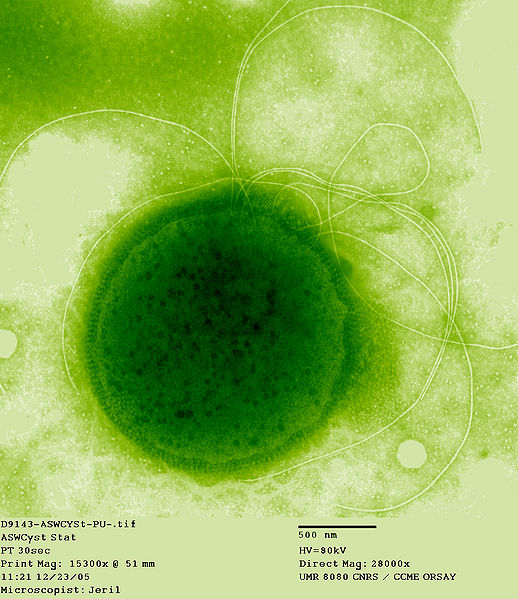
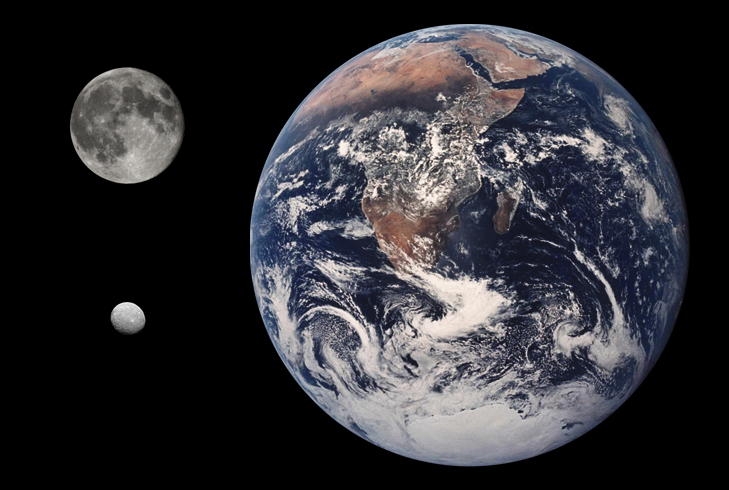


Comments